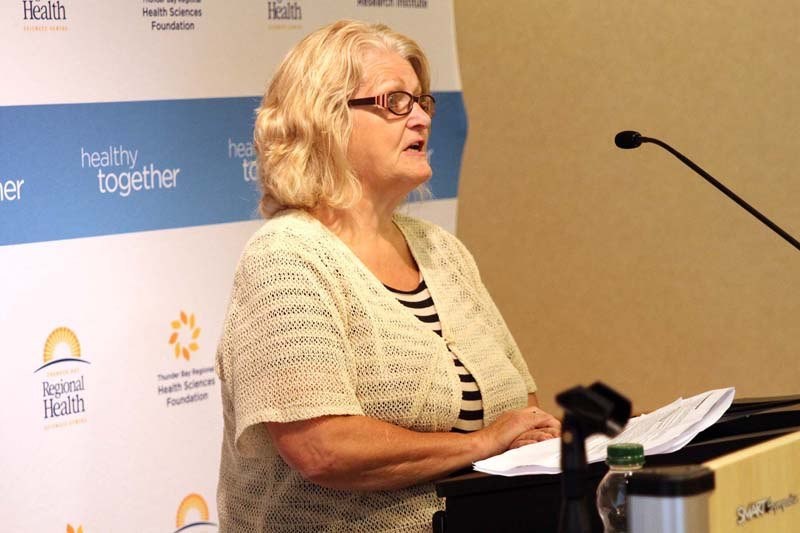Patients admitted to Thunder Bay Regional Health Sciences Centre will now have five sets of instructions for doctors and nurses should they suffer a cardiac or respiratory arrest or unexpected deterioration.
Following the lead of other hospitals in Ontario and across the country, Thunder Bay Regional has implemented a new policy they say gives patients greater control over their level of resuscitation should an incident occur.
Health-care providers have now been instructed to go over the options within 24 hours of admission.
Patients in the end of life care can choose a Level 1 armband, which instructs doctors to provide comfort measures only. A Level 2 patient does not want CPR or ventilator support, but full medical therapy. Level 3 patients don’t want CPR, but will accept non-invasive ventilation including life support, while Level 4 patients want rescue breathing up to intubation, if necessary.
Level 4 and 5 patients receive a lavender armband, while Level 2 and 3 patients receive a blue armband.
Patients who wish to be fully resuscitated will receive no armband and be given full CPR and advanced life sustaining therapy as required.
Critical care physician Will Anderson said the policy took about four years to create, and mixes in existing regulations while helping patients, their families and their loved ones understand the options that are available to them.
The new code level system replaces the Do Not Attempt Resuscitation order that Anderson said was too vague and open for interpretation.
“The five different code status levels actually reflect what is current practice in this hospital,” said Anderson, adding they consulted staff and patient family advisors before making the switch.
“In the past we had a rather artificial dichotomy where a patient would either be a full code or a code, or a DNAR, which meant do not attempt resuscitation. The problem with that is we never knew exactly what it meant.”
DNAR meant different things to different patients at different times. Staff would often get called about patients listed as DNAR who really did want resuscitation and life support, if it meant they would have a good outcome.
“These conversations weren’t really happening beforehand and we needed to really sort out what their true wishes were. We found having a black and white full-code, no-code dichotomy really didn’t work. So we’ve really just taken what we actually do and just broken it into five different levels,” Anderson said.
Patient family advisor Jan Miller, who spent five months in hospital, said being able to tell one’s doctors – or have a family member express one’s wishes – is a great improvement.
“Having these conversations with your family or substantial decision maker gives them the confidence that the decisions they make are precisely as outlined.”
